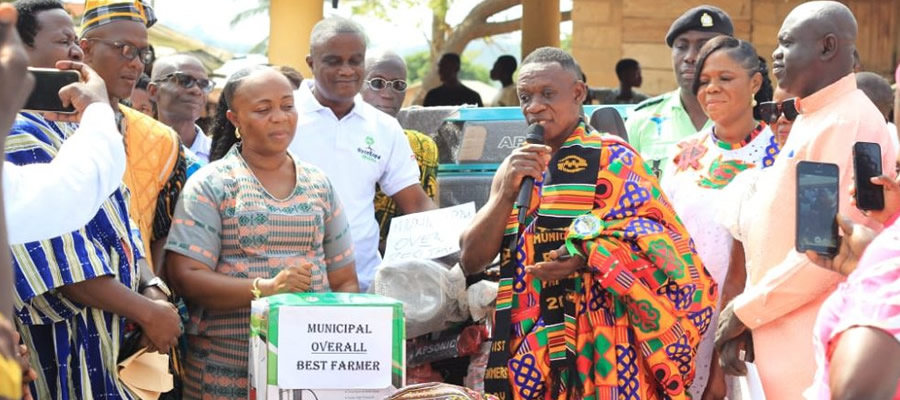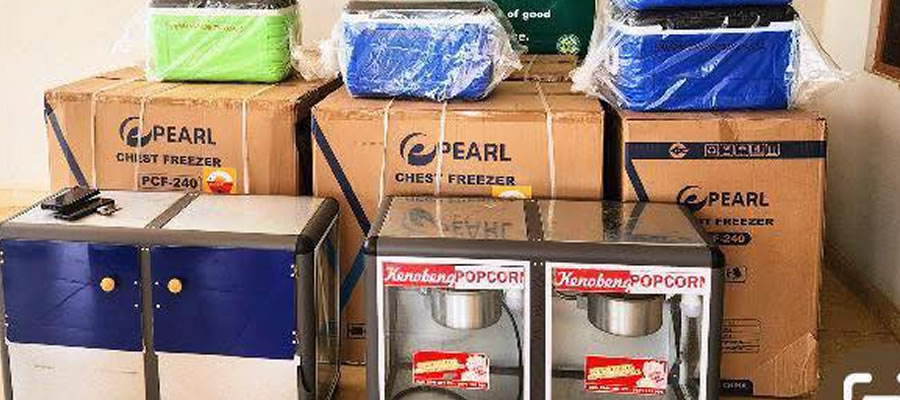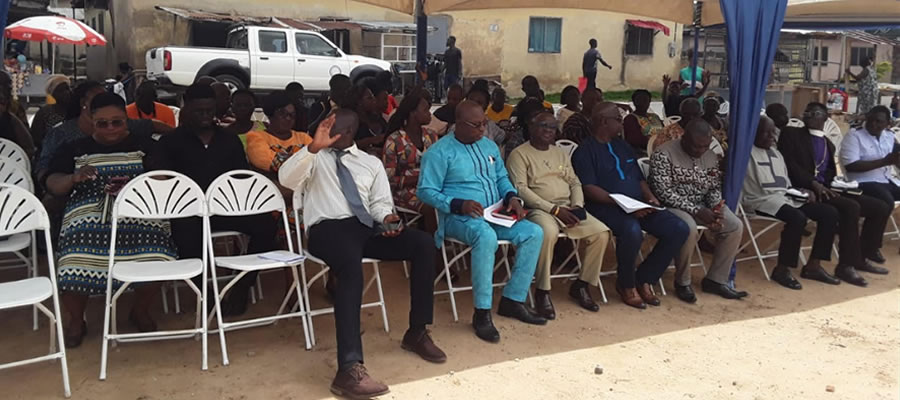

DEVELOPMENT PROJECTIONS, ADOPTED GOALS, OBJECTIVES AND STRATEGIES
INTRODUCTION
This chapter deals with the development projections, adopted, goals, objectives and strategies based on the four dimensions from the NMTDPF (2018-2021) which the municipal will employ in the implementation of the development plan within the period in relation to the adopted issues. This will include the social, economic and infrastructural services that would be provided within the medium-term in order to achieve the national and municipal development objectives.
DEVELOPMENT FOCUS
The development focus of the Municipality based on the NMTDPF (2018-2021) Goals is:
Improved Living Standards through empowered human resource and transformed Private/Informal Sector.
To reduce poverty, the assembly intends to adopt an economic and social development approach by investing in the citizens so they could reach their full potentials. Investing in the informal sector would as well ensure that businesses flourish, when businesses succeed, the economic situation of the municipality would be improved. This can only be achieved through the fulfillment of some related goals, objectives and strategies.
DEVELOPMENT PROJECTIONS
Population Projection
Considering the fact that population is dynamic, and thereby keeps changing by the day which further means the need to increase the numbers of facilities and services necessary to cope with the growing population. In the medium term therefore, the following projections will be adopted to achieve the targeted outcomes.
The population of the New Juaben North according to the 2010 Population and Housing Census of Ghana, was 51,467 with a growth rate of 2.1%. Currently, the population is projected to be 62,171 in 2018. The growth in the municipal area was determined by factors such as fertility rate of 2.4%, Crude Death Rate of 5.9% and migration mostly from the neighboring regions such as Accra, Ashanti and Volta. The rate of population increases, however, calls for expansion in the infrastructure and services.
EDUCATIONAL NEEDS PROJECTIONS
Projected Student Enrolment
The table below exhibits the actual and projected number of students in the Municipal from 2014/2015 to 2020/2021 academic year. At the Kindergarten and Nursery level, the male students and female students are at par and the gap widens at the Primary and JHS levelsYear
HEALTH NEEDS PROJECTIONS
The presence of NHIS has increased attendance to health services which requires the construction of additional health facilities.
In view of the Government’s policy of providing every electoral area with a CHPS compound/health facility in addition to the expected increase in the use of health facilities, the Municipality has a total of Twenty-one (21) electoral areas, five (5) Zonal Councils and Nine (9) Unit Committees. This means that there will be pressure on the existing health facilities hence the need to construct additional health facility. The municipality has eleven (11) health facilities with a backlog of ten (10) addition health facilities to be constructed.
The following planning standards will be applied in the provision of these health facilities.
Health Centre - Population of up to 25,000 people to be served
Health Post - Population of up to 5000 people
Clinic - Population of up to 5000 people
CHPS compound - Population of up to 5000 people
The municipal health directorate as part of its strategies to provide health care has created outreached points at demarcated areas to provide services to the remaining areas with health services.
WATER, ROADS AND SANITATION NEEDS PROJECTIONS
Infrastructure which includes roads, water and sanitation facilities, electricity, telecommunication etc are the engine of growth in the economy. These contribute to improved standard of living of its citizens by increasing productivity.
The Zoning Guidelines and Planning Standards (Ministry of Environment Science and Technology, Town and Country Planning Department) thereby sets facility standards to provide a measure of how many facilities are to be provided. The following types of facilities and their standards are adapted to ensure that communities and businesses have reliable supply of water, electricity, internet access, telecommunication and waste management.
Location of water treatment and storage facilities to ensure safety from contamination. Water treatment plant would be located at least 1 km away from nearest buildings or possible source of contamination. The location of public standpipe should ensure easy access to users as well as safety of users from vehicular traffic. Site should normally be at least 3m (10ft) from the adjoining roads and should be properly drained.
Boreholes would only be sunk in compliance with existing regulations set by the EPA, Community Water and Sanitation Agency and the Water Resources Commission. The minimum population threshold for siting a borehole is 1 borehole to 75 to 300 persons. A population above 6000 should have a Small Town Pipe System Provisions would be made for the expansion of national electricity grid to communities without lights.
SETTLEMENT PLANNING
Increasing population trends calls for good human settlement planning and development. Thus, growing population without proper settlement planning can lead to among others slums, poor layouts, revenue loss and disasters due to poor access. The expected increase in population for the next four years therefore, calls for proper settlement planning especially. Under the Street Naming and Property Addressing Programme, the exercise which is on-going at Effiduase would be completed. Other areas such as Asokore, Akwadum, Oyoko would have their streets named and properties numbered.
ADOPTED DEVELOPMENT ISSUES, THEMATIC GOALS, OBJECTIVE AND STRATEGIES FROM NMTDPF, 2018-2021.
The development objectives and strategies were adopted from the NMTDPF 2018-2021. The priorities and development focus of the Municipal were also considered in the formulation of the strategies. It is the expectation of the Assembly that the achievement of these objectives would lead to the successful realization of its development agenda. Below are the objectives and their corresponding strategies.
Date Created : 3/27/2019 6:09:55 AM










 facebook
facebook
 twitter
twitter
 Youtube
Youtube
 +233 593 831 280
+233 593 831 280 0800 430 430
0800 430 430 GPS: GE-231-4383
GPS: GE-231-4383 info@ghanadistricts.com
info@ghanadistricts.com Box GP1044, Accra, Ghana
Box GP1044, Accra, Ghana